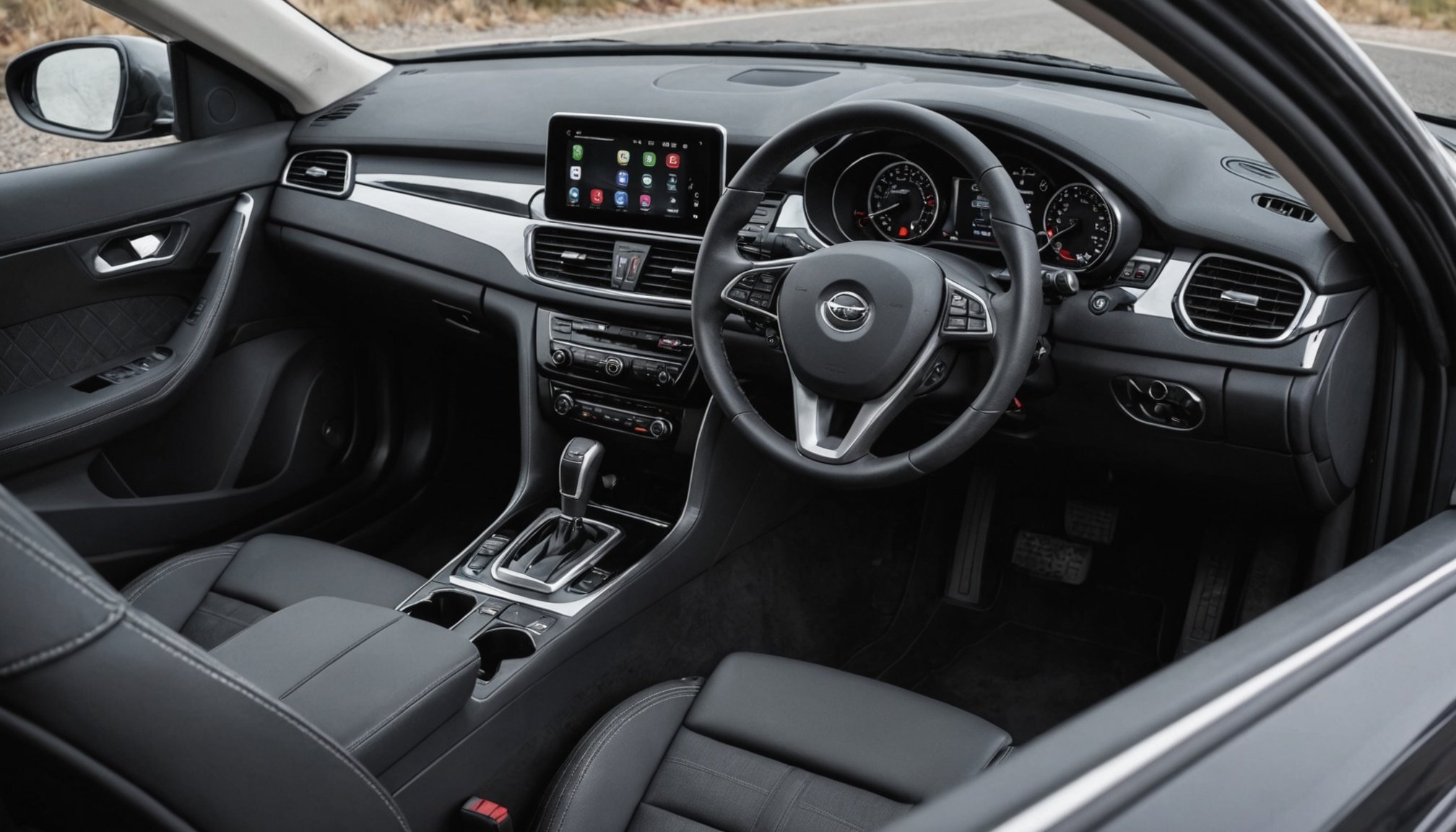Ultimate Guide to Caring for Your Car’s Heated Seats: Enhance Comfort and Safety on the Road
Why Heated Seats are a Must for Comfort and Safety
Heated seats have become a staple in many modern vehicles, especially for those living in regions with harsh winter conditions. These seats not only enhance your driving experience by providing warmth and comfort but also play a crucial role in ensuring your safety on the road.
“When you’re driving in cold weather, heated seats can be a lifesaver,” says John, a frequent winter driver. “They help keep you alert and comfortable, which is essential for safe driving.”
Also read : Top strategies for guaranteeing your vehicle”s electronic parking brake safety and dependability
Here are some key reasons why heated seats are more than just a luxury:
- Comfort: Heated seats can significantly improve your driving experience, especially during long road trips or in cold weather. They help maintain your body temperature, reducing the risk of hypothermia and keeping you alert.
- Safety: Cold and stiff muscles can impair your reaction time and driving abilities. Heated seats ensure that you remain comfortable and alert, reducing the risk of accidents.
- Health Benefits: For people with back or joint pain, heated seats can provide therapeutic relief, making long drives more manageable.
How Heated Car Seats Work
Understanding how heated car seats function can help you appreciate the complexity and importance of proper maintenance.
Also to see : Your ultimate roadmap to ensuring optimal performance of your car”s crash sensor for trustworthy airbag activation
The Mechanics Behind Heated Seats
Heated car seats operate on a simple yet effective principle. Here’s a breakdown of the process:
- Heating Coil: A heating coil is placed under the seat cushion. When you turn on the heated seat, electricity flows through this coil.
- Thermostat: A thermostat regulates the temperature to prevent overheating. Once the desired temperature is reached, the thermostat switches off the power to the coil. When the temperature drops, the relay switches back on to reheat the seats[4].
Components Involved
- Seat Cushion: The seat cushion is often glued to the cover, making DIY installations challenging.
- Electrical System: The heating elements are connected to your car’s electrical system, which includes the battery and relays.
- Thermostat: This component is crucial for maintaining a safe and comfortable temperature.
Maintenance Tips for Your Heated Seats
Proper maintenance is key to ensuring your heated seats continue to function optimally and safely.
Cleaning Your Heated Seats
Cleaning your heated seats is essential to maintain their quality and functionality. Here are some steps to follow:
- Vacuum the Seats: Use a vacuum cleaner with a soft brush attachment to remove dust and debris from the leather surfaces and seams[1].
- Wipe Down Leather: Gently wipe the leather with a microfiber cloth to remove surface dirt.
- Apply Leather Cleaner: Use a pH-neutral leather cleaner and apply it with a soft cloth or brush. Make sure to work in small sections and wipe off the cleaner with a clean, damp microfiber cloth before it dries[1].
Conditioning and Protecting the Leather
After cleaning, it’s crucial to condition and protect the leather to keep it supple and prevent cracks.
- Choose a Quality Leather Conditioner: Select a conditioner suitable for your car’s leather.
- Apply Conditioner: Apply the conditioner in a thin, even layer over the leather and let it absorb.
- Buff Off Excess: Gently buff off any excess conditioner with another clean microfiber cloth[1].
Regular Maintenance
Regular maintenance is vital to keep your heated seats in top condition:
- Regular Cleaning: Repeat the cleaning process every few months or as needed.
- Immediate Attention to Spills: Clean any spills immediately to prevent stains and damage.
- Avoid Direct Sunlight: Park in shaded areas or use a windshield sun protector to minimize sun exposure[1].
DIY Repairs vs. Professional Installation
While some drivers might be tempted to repair or install heated seats themselves, there are significant risks involved.
Risks of DIY Installation
Installing or repairing heated seats yourself can lead to several issues:
- Damage to Seat Cover: Improper installation can damage the seat cover, leaving visible wear or gaps that compromise your car’s interior look.
- Safety Issues: Faulty installation can affect seatbelt sensors, causing safety issues. There’s also the risk of electrical issues, such as short circuits, battery drain, or even a fire hazard[4][5].
Why Professional Installation is Recommended
Given the complexities and risks involved, it’s highly recommended to leave the installation and repair of heated seats to professionals.
- Quality and Safety: Professionals ensure a high-quality installation that is safe and reliable, without compromising your car’s warranty or resale value.
- Expertise: Professional accessory specialists have the experience and knowledge to handle the intricate process of installing heated seats, including dealing with glued seat cushions and electrical systems[4].
Common Issues and How to Fix Them
Sometimes, despite proper maintenance, issues can arise with your heated seats. Here’s how to address some common problems:
Heated Seat Not Working
If your heated seat is not working, here are some steps to troubleshoot:
- Check the Electrical System: Ensure that the electrical connections are secure and not damaged.
- Inspect the Heating Coil: Check for any signs of damage or wear on the heating coil.
- Consult the Manual: Refer to your car’s manual for specific troubleshooting steps.
Example: Repairing a Heated Seat
In a YouTube video, a driver shares his experience of repairing a heated seat in his 2003 Lincoln Town Car. The issue was a melted wire bridge inside the heated seat, which caused uneven heating and a burning sensation. Here’s a summary of his steps:
- Identify the Problem: Locate the source of the issue, which in this case was a melted wire bridge.
- Disassemble the Seat: Carefully disassemble the seat to access the heating coil.
- Repair the Wire: Clean and reconnect the wires. If necessary, use soldering or crimping to secure the connections.
- Reassemble the Seat: Put the seat back together, ensuring all connections are secure and the seat cover is properly aligned[2].
Additional Safety Features to Enhance Your Driving Experience
While heated seats are a significant comfort and safety feature, there are other elements you can consider to enhance your driving experience.
Seat Covers and Protective Mats
Using high-quality seat covers and protective mats can shield your leather seats from common staining agents and wear.
- Leather Seat Covers: Choose covers that are breathable and designed for your specific type of leather.
- Protective Mats: Use mats that are easy to clean and provide a barrier against spills and dirt[3].
Tech and Electric Features
Modern cars come with a variety of tech and electric features that can enhance your driving experience:
- Cruise Control: Helps reduce driver fatigue on long road trips.
- Air Conditioning: Keeps you cool in the summer and can be paired with heated seats for optimal comfort.
- Steering Wheel Controls: Allows you to control various functions without taking your hands off the wheel.
Insurance and Breakdown Cover Considerations
When it comes to car maintenance, including your heated seats, it’s important to consider your insurance and breakdown cover.
Car Insurance
Ensure your car insurance covers any electrical or mechanical failures, including issues with your heated seats.
- Comprehensive Coverage: This type of coverage typically includes repairs for electrical components.
- Deductibles: Understand your deductibles and what is covered under your policy.
Breakdown Cover
A good breakdown cover can provide peace of mind, especially during winter driving when electrical issues might be more common.
- Emergency Assistance: Look for a breakdown cover that includes emergency assistance for electrical issues.
- Towing Services: Ensure the cover includes towing services to a nearby repair shop if needed.
Practical Insights and Actionable Advice
Here are some practical tips to keep in mind when caring for your heated seats and overall vehicle:
Winter Driving Tips
- Preheat Your Car: Before starting your journey, preheat your car to warm up the interior and the engine.
- Use Winter Tires: Ensure you have high-quality winter tires for better traction and safety.
- Keep an Emergency Kit: Always keep an emergency kit in your car, including items like a blanket, flashlight, and first aid kit.
General Maintenance
- Regular Check-Ups: Regularly check your vehicle’s electrical and mechanical systems to prevent breakdowns.
- Keep Your Car Clean: Regular cleaning, both inside and out, can help maintain your car’s condition and resale value.
Caring for your car’s heated seats is an integral part of maintaining your vehicle’s overall comfort, safety, and value. By following the tips outlined above, you can ensure your heated seats continue to function optimally, enhancing your driving experience and keeping you safe on the road.
As a driver, it’s crucial to make sure your car is well-maintained, from the leather upholstery to the electrical systems. Whether you’re embarking on a long road trip or just driving to work, a well-cared-for vehicle can make all the difference.
So, the next time you get behind the wheel, remember that your car’s heated seats are more than just a luxury—they’re a vital component of your driving comfort and safety. Take the time to maintain them properly, and they will continue to serve you well for many miles to come.
Detailed Bullet Point List: Steps for Cleaning and Maintaining Heated Seats
- Vacuum the Seats:
- Use a vacuum cleaner with a soft brush attachment to remove dust, dirt, and debris from the leather surfaces and seams.
- Wipe Down Leather:
- Gently wipe the leather with a microfiber cloth to remove surface dirt.
- Apply Leather Cleaner:
- Use a pH-neutral leather cleaner and apply it with a soft cloth or brush. Work in small sections and wipe off the cleaner with a clean, damp microfiber cloth before it dries.
- Condition the Leather:
- Choose a quality leather conditioner suitable for your car’s leather.
- Apply the conditioner in a thin, even layer over the leather and let it absorb.
- Buff off any excess conditioner with another clean microfiber cloth.
- Protect the Leather:
- Apply a leather protectant to add a layer of protection against UV rays.
- Ensure even application and let the protectant dry completely before using the vehicle.
- Regular Maintenance:
- Repeat the cleaning process every few months or as needed.
- Clean any spills immediately to prevent stains and damage.
- Avoid direct sunlight by parking in shaded areas or using a windshield sun protector.
Comprehensive Table: Comparison of Different Car Upholstery Types
| Upholstery Type | Characteristics | Cleaning Method | Maintenance Tips |
|---|---|---|---|
| Leather | Luxurious, durable | Use pH-neutral leather cleaner, condition regularly | Avoid direct sunlight, use leather protectant[1][3] |
| Vinyl | Durable, easy to clean | Use mild soap solution and warm water, apply vinyl conditioner | Regularly clean up spills, use protective mats[3] |
| Fabric | Comfortable, affordable | Vacuum regularly, spot clean stains with mild detergent | Deep clean with steam cleaner or specialized fabric cleaner[3] |
| Suede | Soft, delicate | Use suede-specific cleaner, avoid water | Regularly brush to maintain texture, avoid direct sunlight[3] |
| Synthetic | Resistant to stains | Use mild soap solution and warm water | Regularly clean up spills, use protective mats[3] |
Relevant Quotes
- “Heated seats can be a lifesaver when driving in cold weather. They help keep you alert and comfortable, which is essential for safe driving.” – John, frequent winter driver.
- “Improper installation can damage the seat cover, leaving visible wear or gaps that compromise your car’s interior look.” – D&S Automotive[4].
- “Regular maintenance is the key to keeping your upholstery in peak condition and ensuring your vehicle’s interior stays as good as new for years to come.” – Fresh-Layer[3].











